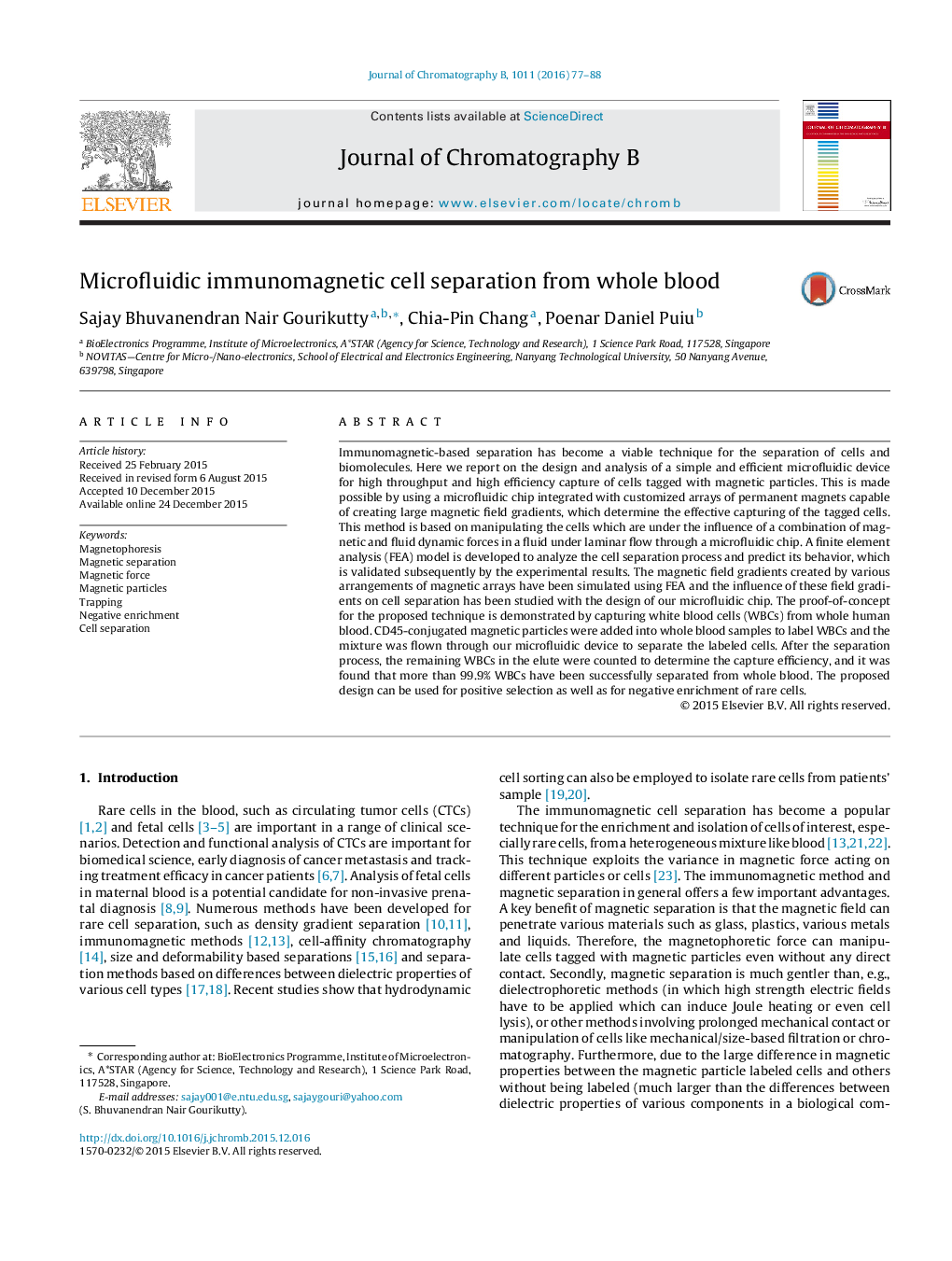| Article ID | Journal | Published Year | Pages | File Type |
|---|---|---|---|---|
| 1212776 | Journal of Chromatography B | 2016 | 12 Pages |
•Proposed design allows efficient continuous flow magnetic separation of cells.•Unique design creates strong magnetic field gradients to manipulate cells.•Can be used for positive selection as well as negative enrichment of rare cells.•Achieves separation efficiency of >99.9% WBCs from whole blood.•Demonstrated the separation of cells from relatively large volume of whole blood without any pre-processing.
Immunomagnetic-based separation has become a viable technique for the separation of cells and biomolecules. Here we report on the design and analysis of a simple and efficient microfluidic device for high throughput and high efficiency capture of cells tagged with magnetic particles. This is made possible by using a microfluidic chip integrated with customized arrays of permanent magnets capable of creating large magnetic field gradients, which determine the effective capturing of the tagged cells. This method is based on manipulating the cells which are under the influence of a combination of magnetic and fluid dynamic forces in a fluid under laminar flow through a microfluidic chip. A finite element analysis (FEA) model is developed to analyze the cell separation process and predict its behavior, which is validated subsequently by the experimental results. The magnetic field gradients created by various arrangements of magnetic arrays have been simulated using FEA and the influence of these field gradients on cell separation has been studied with the design of our microfluidic chip. The proof-of-concept for the proposed technique is demonstrated by capturing white blood cells (WBCs) from whole human blood. CD45-conjugated magnetic particles were added into whole blood samples to label WBCs and the mixture was flown through our microfluidic device to separate the labeled cells. After the separation process, the remaining WBCs in the elute were counted to determine the capture efficiency, and it was found that more than 99.9% WBCs have been successfully separated from whole blood. The proposed design can be used for positive selection as well as for negative enrichment of rare cells.
